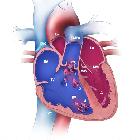Rubinstein-Taybi syndrome




Rubinstein-Taybi syndrome (RTS) is a very rare genetic multi-system disorder primarily characterized by intellectual disability, broad and often angulated thumbs and halluces, and distinctive facial features.
Epidemiology
The estimated incidence is 1 in 100,000-125,000 live births .
Clinical presentation
The presence of a syndrome is usually evident at birth and becomes more obvious with increasing age as developmental delay becomes more pronounced. Features include :
- facial appearance
- high arched eyebrows
- long eyelashes
- down-slanting palpebral fissures
- broad nasal bridge/beaked nose
- high arched palate
- mild micrognathia
- unusual facial expression: the grimacing or at least unusual smile with an almost closing of the eyes
- talon cusps of the permanent incisors
- limbs
- broad thumbs and broad big toes (almost always present)
- partial duplication of the first ray (hands or feet)
- radially deviated thumbs and halluces
- broadening of the terminal phalanges of the fingers
- persistent fetal pads
- clinodactyly of the fifth fingers
- skull and central nervous system
- microcephaly
- intellectual retardation (IQ 35-50)
- congenital cardiac abnormalities: reported in up to 33% of affected patients
- hirsutism
Pathology
Most cases are thought to be sporadically deriving from de novo mutations at a locus on band 16p13.3, which encompasses the gene for the transcription co-factor cyclic adenosine monophosphate response element-binding protein-binding protein.
Other cases are due to a mutation in either CREB-binding protein (CBP) or E1A-binding protein (p300) .
Radiographic features
The radiology reflects the morphological abnormalities described above, particularly of the face, skull and limbs.
Treatment and prognosis
Despite an increased risk of developing intracranial tumors (meningioma and other brain tumors), and leukemia (which tend to occur before 15 years of age) life expectancy appears to be normal .
While significant advances in the knowledge of clinical manifestations and natural history of RTS have been made, guidelines for the healthcare and follow-up care of RTS have not been well updated after the proposal of Wiley et al. in 2003 .
Siehe auch:
- Persistierender Ductus arteriosus
- Skoliose
- Atriumseptumdefekt
- Klinodaktylie
- Herzfehler
- Mikrognathie
- Mikrozephalie
- Hirntumoren
- Ventrikelseptumdefekt
- Verbreiterter Grosszeh
- verbreiterter Daumen
und weiter:

 Assoziationen und Differentialdiagnosen zu Rubinstein-Taybi-Syndrom:
Assoziationen und Differentialdiagnosen zu Rubinstein-Taybi-Syndrom:









